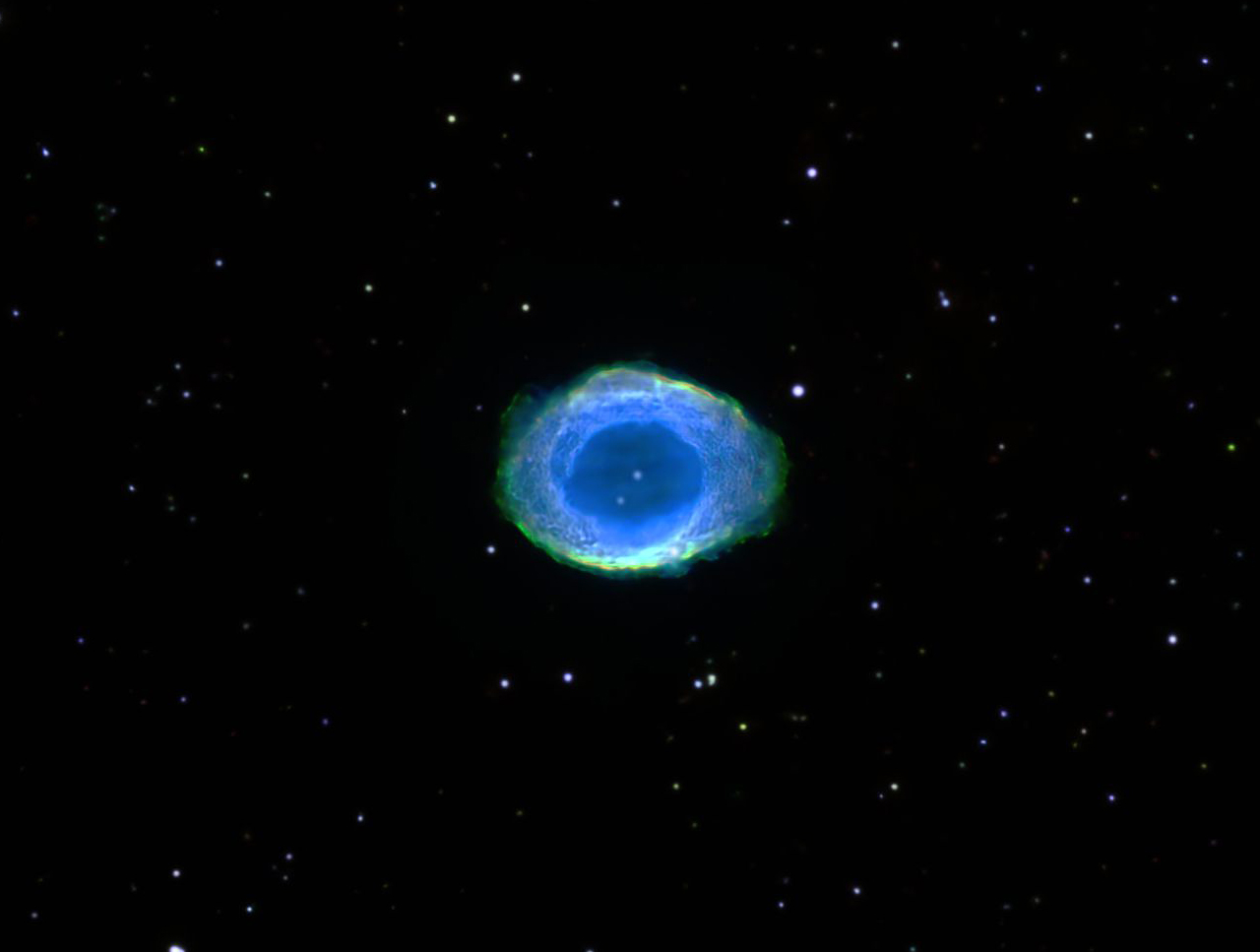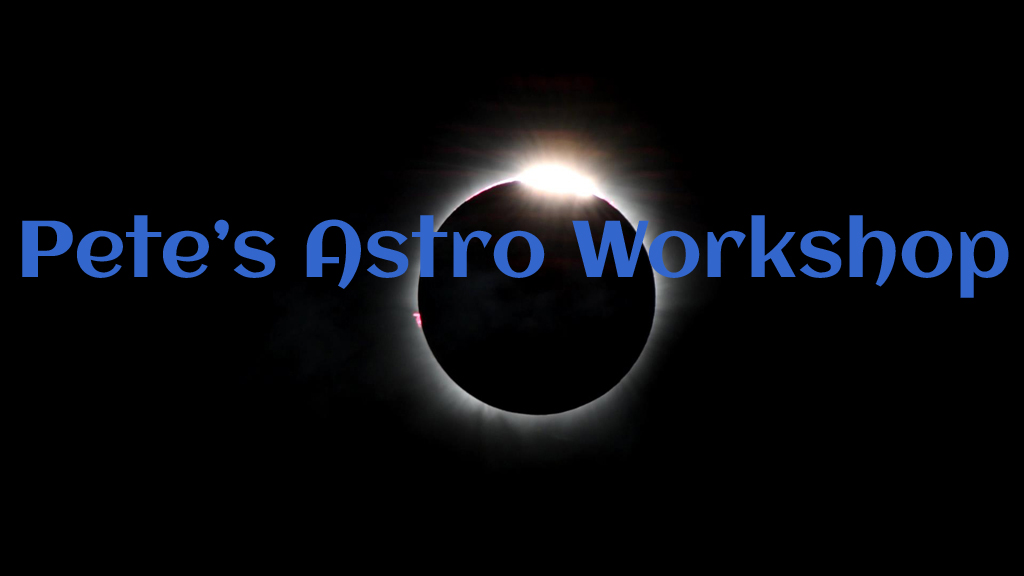M57 The Ring Nebula

M57 is a planetary nebula in the small constellation of Lyra, not far from the bright star Vega.
The term ‘planetary nebula’ is sometimes attributed to Charles Messier, who discovered M57 in 1779 and compared its appearance to Jupiter. However although some planetary nebulæ resemble planets visually, physically they are completely different. When a star of similar mass to the Sun begins to exhaust its supply of hydrogen fuel its core starts to contract which increases its temperature. An increased stellar wind blows away the star’s outer layers to form a spherical shell, typically about a light year in diameter. This stage is called a proto-planetary nebula (not to be confused with the protoplanetary disk that surrounds a new-born star).
Later in the star’s evolution when it is burning helium it becomes much hotter (around 30,000K) and emits ultraviolet radiation that ionizes the shell, producing the beautiful colours that many planetary nebulæ exhibit.
The Ring is about 2,500 light years distant so it is very small in the eyepiece – only about 1.5 arc minutes across for the bright inner part. The central star was not discovered until over a century later. At magnitude 15 it is a difficult object to see in anything less than a 12-inch telescope.
This is a narrowband image of M57 using the Hubble pallette in which SII is mapped to the red channel, H-α to green and OIII to blue. As such its appearance is quite different from those acquired with conventional red, green and blue broadband filters. The image is dominated by H-α and OIII, with just a little red marking the presence of SII.
Equipment: Planewave CDK 14″ reflector, FLI Proline P9000 CCD camera and 3nm Astrodon filters. Exposure times were 16 hrs each through SII, Hα and OIII. Data capture with ACP Expert. Processed in PixInsight.


0 Comments